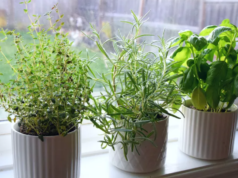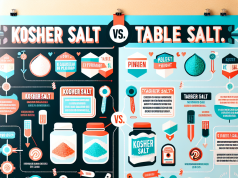Contents
Simple Steps to Start Your Own Indoor Herb Garden in the Kitchen
Creating an indoor herb garden in your kitchen is a rewarding and delightful venture that can enhance your cooking and brighten your space. Whether you’re a seasoned gardener or a beginner, growing herbs at home is a simple and enjoyable way to cultivate fresh ingredients right at your fingertips. In this guide, we will walk you through easy steps to set up your herb garden, choose the right herbs, and ensure they thrive in your indoor environment.
Benefits of an Indoor Herb Garden
Fresh Ingredients at Your Fingertips
Having an indoor herb garden allows you to enjoy fresh herbs whenever you cook, enhancing the flavor of your dishes.
Improved Air Quality
Plants can help purify the air, making your kitchen a healthier environment.
Cost-Effective
Growing your own herbs can save you money compared to buying fresh herbs from the store.
Choosing the Right Herbs
Popular Kitchen Herbs
- Basil
- Parsley
- Chives
- Cilantro
- Mint
Consider Your Cooking Style
Choose herbs that you frequently use in your recipes to get the most out of your garden.
Essential Supplies Needed
Pots and Containers
Use pots with drainage holes to prevent overwatering. Small to medium-sized pots are ideal for kitchen herbs.
Quality Potting Soil
Choose a well-draining potting mix designed for herb gardening. Avoid garden soil, which may not drain well indoors.
Light Source
Ensure your herbs receive at least 6-8 hours of sunlight daily. South-facing windows are the best choice, or consider using grow lights.
Step-by-Step Guide to Planting
1. Select Your Containers
Choose appropriate-sized pots based on the herbs you want to grow.
2. Fill with Potting Soil
Fill the pots about three-quarters full with potting soil and tamp it down gently.
3. Plant Your Seeds or Seedlings
Follow the instructions on the seed packet or transplant seedlings carefully into the soil.
4. Watering
Water the herbs well after planting, but make sure not to overwater. Keep the soil moist but not soggy.
5. Place in a Well-Lit Location
Put your pots in a sunny spot in your kitchen or under grow lights.
Care and Maintenance
Watering
Check the soil moisture regularly and water when the top inch feels dry.
Fertilizing
Use a diluted liquid fertilizer every few weeks to nourish your herbs.
Pruning
Regularly trim your herbs to encourage growth and prevent them from becoming leggy.
Troubleshooting Common Issues
Pests
Keep an eye out for pests like aphids and spider mites. You can use insecticidal soap to manage these pests.
Wilting Herbs
Yellow leaves may indicate overwatering. Adjust your watering schedule to help revive your herbs.
Insufficient Growth
If your herbs are not growing, consider adjusting their light exposure or changing the potting soil.
Harvesting Your Herbs
Timing Your Harvest
Start harvesting your herbs once they have enough leaves to sustain growth, typically a few weeks after planting.
How to Harvest
Use sharp scissors to cut leaves from the top, allowing lower leaves to continue growing for future harvests.
Frequently Asked Questions about Starting Your Indoor Herb Garden
1. What herbs are suitable for indoor gardening?
Some popular herbs for indoor gardening include basil, parsley, mint, chives, and cilantro. These herbs thrive well in a kitchen environment and are easy to grow.
2. How much sunlight do indoor herbs need?
Most herbs require about 6-8 hours of sunlight daily. Place them near a south-facing window or use grow lights if natural light is insufficient.
3. What type of soil should I use for my indoor herb garden?
Use a high-quality potting mix that offers good drainage. A blend specifically formulated for herbs or vegetables is ideal.
4. How often should I water my indoor herbs?
Water your herbs when the top inch of soil feels dry. Be careful not to overwater, as it can lead to root rot.
5. Can I use store-bought herbs to start my indoor garden?
Yes, you can propagate store-bought herbs by cutting a few sprigs and placing them in water until they develop roots. Then, transfer them to soil.
6. Do I need to fertilize my indoor herb garden?
Yes, applying a liquid fertilizer every 4-6 weeks can help promote healthy growth. Choose an organic fertilizer for the best results.
7. How can I prevent pests in my indoor herb garden?
Regularly check your herbs for pests and wipe the leaves with water. Neem oil is also effective in deterring common pests.
8. When is the best time to harvest herbs?
You can start harvesting your herbs once they are 6-8 inches tall. Regular harvesting encourages growth, but be sure to leave enough leaves for the plant to thrive.
9. Is it possible to grow herbs year-round indoors?
Yes, with the right conditions—adequate light, temperature, and watering—you can grow herbs indoors throughout the year.
10. What containers are best for indoor herbs?
Choose pots with drainage holes to prevent waterlogging. Clay pots are ideal as they promote airflow to the roots, but plastic pots work as well.
Benefits of an Indoor Herb Garden
Having an indoor herb garden in your kitchen comes with numerous advantages that enhance both your cooking and living experience.
Fresh Herbs at Your Fingertips
Growing herbs indoors provides access to fresh flavors right from your home. Common herbs like basil, parsley, and thyme can elevate the taste of your dishes significantly.
Air Quality Improvement
Indoor plants, including herbs, can help improve air quality by absorbing toxins and releasing oxygen. This contributes to a healthier kitchen environment.
Best Herbs for Indoor Gardening
Choosing the right herbs for your indoor herb garden is crucial for success. Here are some popular options:
Basil
Basil thrives in warm environments and is ideal for a sunny kitchen. Its aromatic leaves are perfect for Italian dishes.
Mint
Mint is hardy and grows well in pots. It’s versatile for both culinary and non-culinary uses, such as tea or garnishes.
Tips for Growing Indoor Herbs
To successfully grow an indoor herb garden, consider the following tips:
Lighting
Ensure your herbs receive at least six hours of sunlight a day. A south-facing window is often the best location.
Soil and Water
Use well-draining potting soil and avoid overwatering. Herbs prefer slightly dry conditions rather than soggy roots.
Learn More About Indoor Gardening
For further information on indoor gardening techniques, check out the detailed guide on Wikipedia.
Simple Steps to Start Your Own Indoor Herb Garden in the Kitchen
- Choose the Right Herbs: Opt for easy-to-grow varieties like basil, parsley, and mint.
- Select Containers: Use pots with drainage holes to prevent overwatering.
- Pick a Sunny Spot: Find a windowsill or area with plenty of natural light.
- Use Quality Soil: Choose well-draining potting soil for optimal growth.
- Water Wisely: Water your herbs when the top inch of soil feels dry.
- Fertilize Occasionally: Use a liquid fertilizer every few weeks for healthy plants.
- Maintain Temperature: Keep the indoor environment between 65-75°F (18-24°C).
Category – Pepper, Salt and Herbs








































